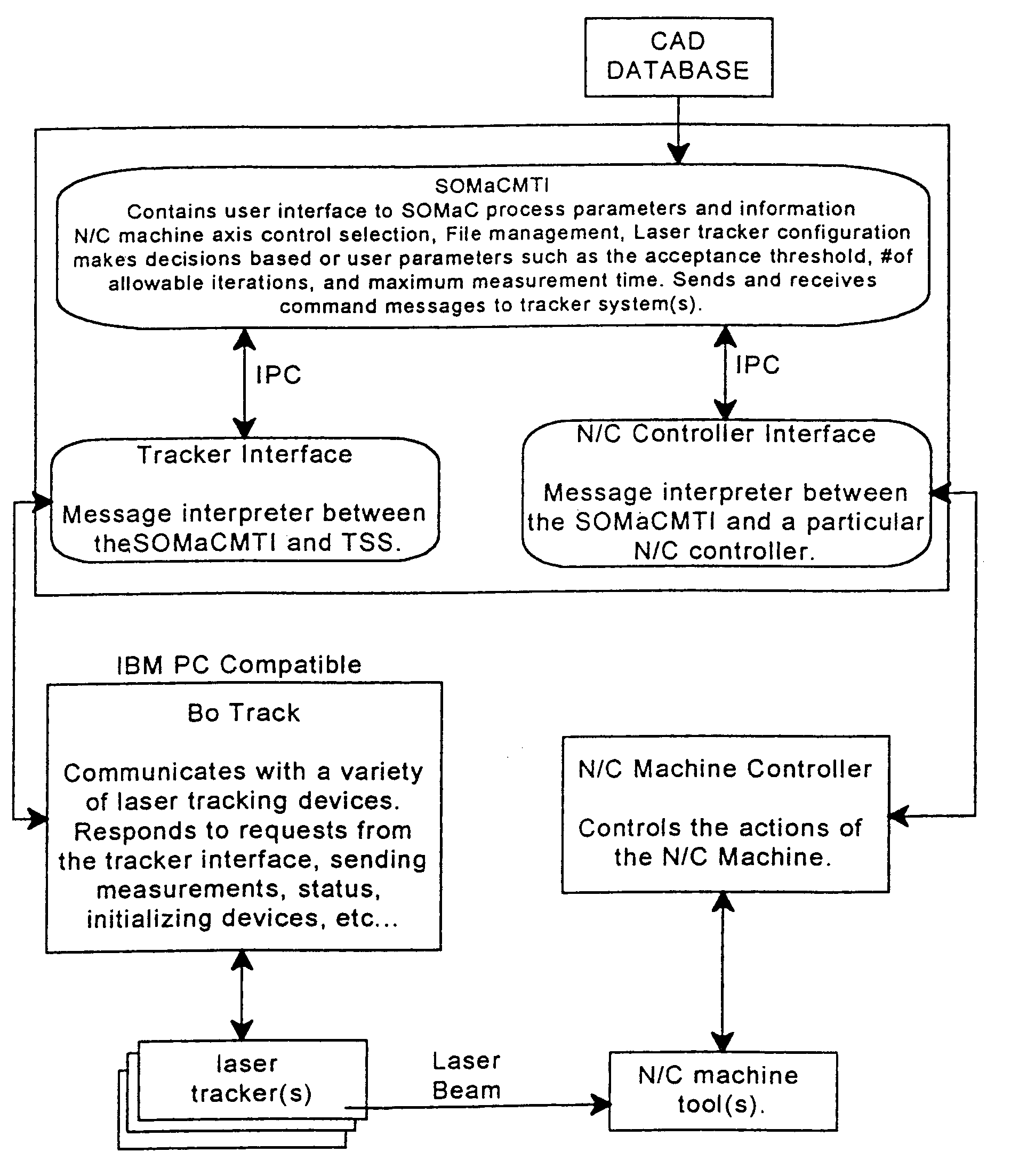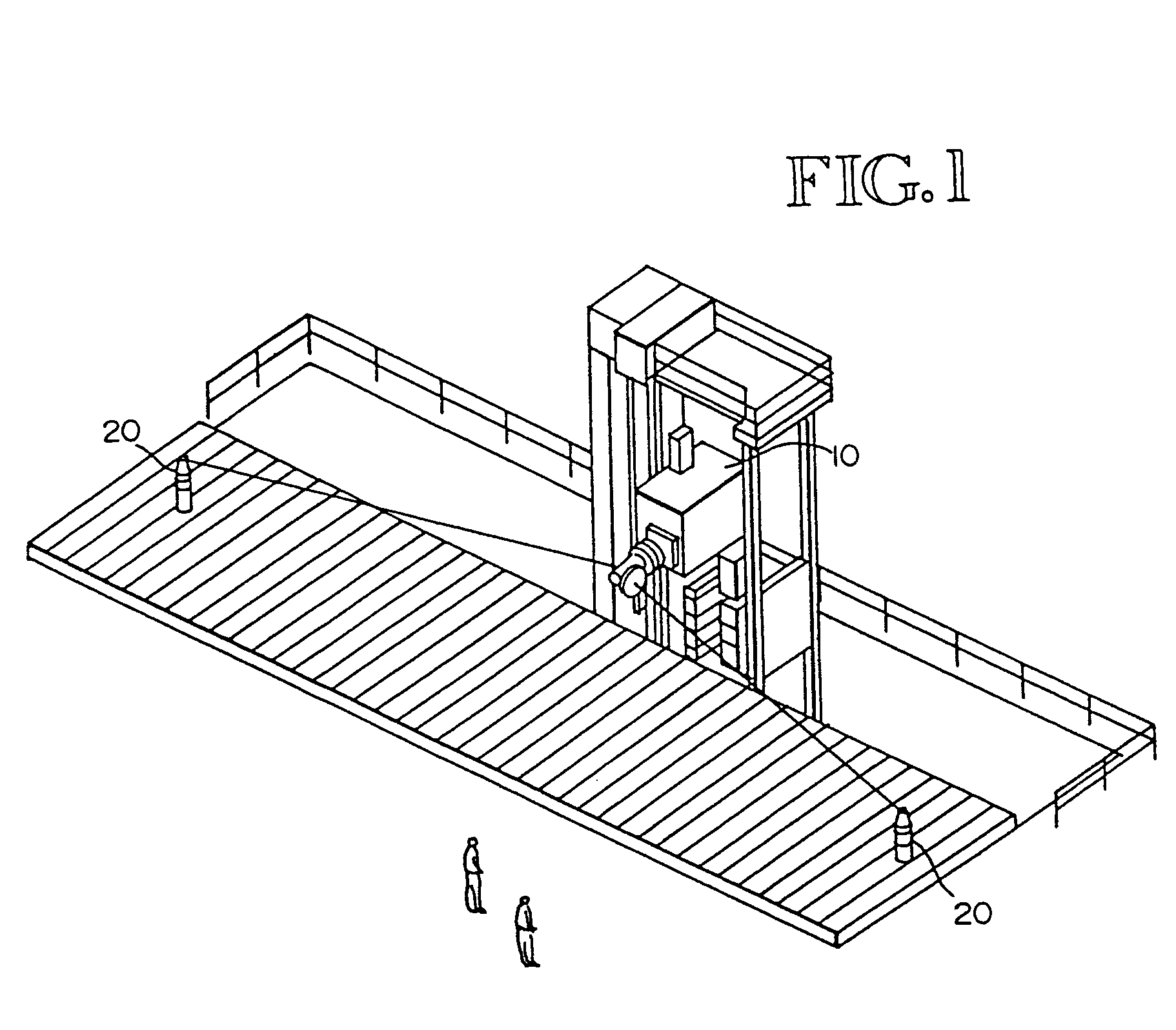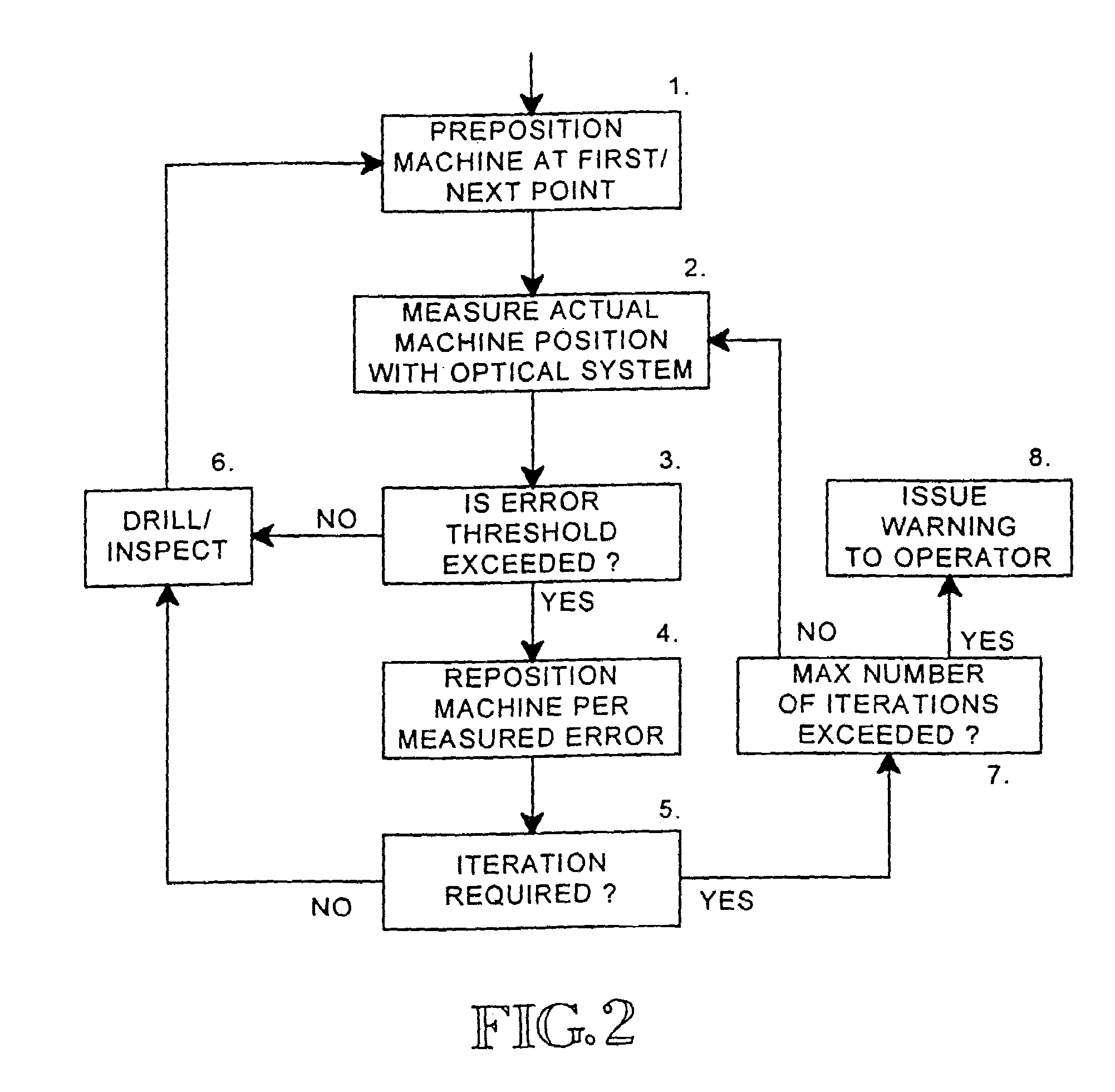Machine tools exhibit dimensional positioning errors that are difficult to minimize.
The primary contributors to these positioning errors are: (1) expansion and contraction of the machine structure and the workpiece (i.e., the part) because of thermal changes in the factory during
machining, and (2) mechanical misalignments of and between individual axes of the machine.
The accuracy of the machine is often so uncertain that post-machining inspection of the dimensions of the parts must be made using an independent measuring method.
Such inspection requires special tools and skilled workers as well as significant factory space.
It slows the production process.
Failing inspection, parts must be reworked or scrapped.
Post-production inspection,
rework, and
scrap are the result of poor design or manufacturing processes.
Errors arising from temperature variations are reduced, but this method does not solve the thermal error problem entirely.
Three main drawbacks are:(i) The cost of controlling the environment is high and sometimes exceeds the cost of acquiring the machine.(ii) Thermal effects induced by the machine itself (e.g. motor heat from driving under load, and spindle heating due to friction) still can cause machine
distortion(iii) Mechanical misalignment of axes remains uncorrected.
Mechanical alignments change over time as the machine experiences normal and abnormal wear.
They are essentially unpredictable, unavoidable, and difficult to control.
Machine calibration is inadequate for two reasons.
First, the method requires extensive machine
downtime to measure and to adjust the error parameters.
The difficulty in the measurement and adjustment is compounded by the fact that
thermal variation causes dimensional changes from shift to shift and
day to day.
Second, because of constant readjustment of the machine, the changes mean that the final set of data is not a single “snapshot” of the machine errors, but are a series of snapshots each of a different parameter, at a different time, as the machine changes.
The method allows real-time compensation for
thermal growth and shrinkage, but is inadequate for at least three reasons.
First, it cannot be applied to rotary axes.
Second, it does not compensate for mechanical misalignments between axes.
Third, it does not address the interaction between axes as thermal changes occur.
Look-up tables are inadequate primarily because the tables are valid for only one machine temperature.
There is no guarantee that a machine will behave isometrically and return to its original geometry as temperature changes occur.
So, after a laborious data collection exercise leading to an empirical table or set of equations to adjust the position of the machine based upon its history of performance, the
root cause(s) for inaccuracy will still continue to degrade the effectiveness of the
error map.
The
error map is inherently inaccurate whenever the machine has changed.
As the machine continues to wear and age, variations from the measured offsets of the original
error map occur.
As a result, errors in part construction may increase.
Certain combinations of these methods can be used to overcome weaknesses in the individual methods, but the net effect remains: (1) long
downtime of the machine to measure its true position; (2) expensive testing; and (3) only temporary, corrective results.
The cost of controlling the environment combined with the cost of machine
downtime for checking and readjusting the machine can be expensive.
This error model is established by gathering actual 3D machine position and corresponding temperature data over a range of temperatures, which can require significant machine downtime.
It can also be difficult to place the machine in the desired thermal status.
There are two main drawbacks to the thermal compensation method.
First, thermal compensation requires periodic machine downtime to calibrate the sensors and the error model.
Second, thermal compensation focusing on the machine does not correct for the expansion of the part or tooling fixtures.
The Merry
system is difficult to retrofit to an existing
control system for a machine, because its laser feedback is designed to replace the conventional machine controller.
To track the target, the interferometers must be close together which introduces significant interpolation or calculation errors.
By overriding the machine controller, control of the machine might be lost, for example, if chips obscure the laser beam.
For high value parts, the risk of loss of control is unacceptable.
The Merry
system, accordingly, has not been implemented for practical use in industry because of the problems it poses.
The Merry
system cannot determine the location of the workpiece in relationship to the machine using the three interferometers alone.
Absolute
ranging tracking interferometers are highly desirable in
manufacturing operations, because movement of the machines, parts, and operators in the factory can lead to beam breaks.
Attaining 0.50 mm positioning uncertainty within a 100 cubic meter volume is difficult.
Large volume drilling machine capability below 30 ppm is difficult to achieve.
Such tolerances exceed the capability of most machines.
 Login to View More
Login to View More  Login to View More
Login to View More 


